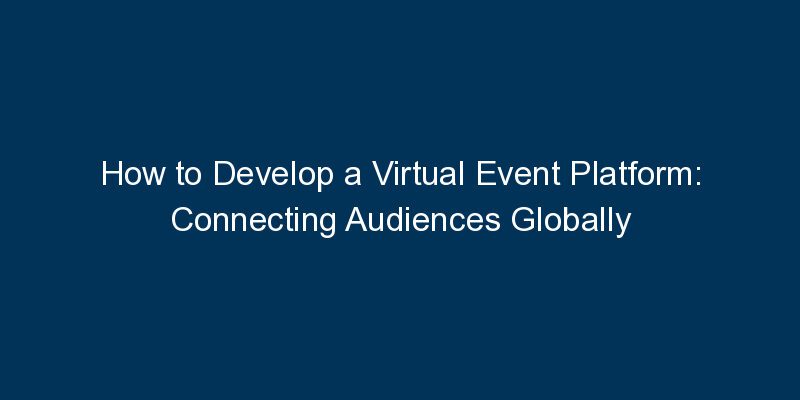The rise of virtual events has transformed the way people connect, learn, and collaborate. This blog provides a comprehensive guide on how to develop a virtual event platform, offering organizations the opportunity to host engaging and immersive online events that transcend geographical boundaries.
Introduction:
In an era where physical gatherings face challenges, virtual events have become a powerful alternative for connecting people across the globe. This guide explores the key steps involved in developing a virtual event platform, enabling organizations to host impactful online events.
Key Steps to Develop a Virtual Event Platform:
- Define Virtual Event Goals: Clearly define the goals and objectives of your virtual events. Whether it’s hosting conferences, webinars, or trade shows, understanding your purpose is essential for platform development.
- Select Virtual Event Features: Choose the features and functionalities your platform will offer. This may include live streaming, interactive sessions, networking opportunities, virtual exhibitor booths, and attendee engagement tools.
- Platform Architecture and Technology Stack: Design a robust architecture for your virtual event platform. Select the appropriate technology stack, considering factors like scalability, security, and real-time interaction capabilities.
- User Registration and Onboarding: Implement a seamless registration and onboarding process for event participants. Ensure user-friendly interfaces and collect necessary information for personalized event experiences.
- Integration with Streaming Services: Integrate with reliable streaming services to facilitate live and on-demand content delivery. This includes video streaming, live chat features, and interactive elements to enhance the virtual event experience.
- Testing and Quality Assurance: Conduct thorough testing of the platform to identify and rectify any issues. Test for scalability, performance, and user experience to ensure a smooth and reliable virtual event environment.
Conclusion:
Developing a virtual event platform opens new possibilities for organizations to connect with audiences globally. By following the steps outlined in this guide, businesses can create a virtual event platform that not only meets their specific needs but also delivers a seamless and engaging experience for participants.






















Comments